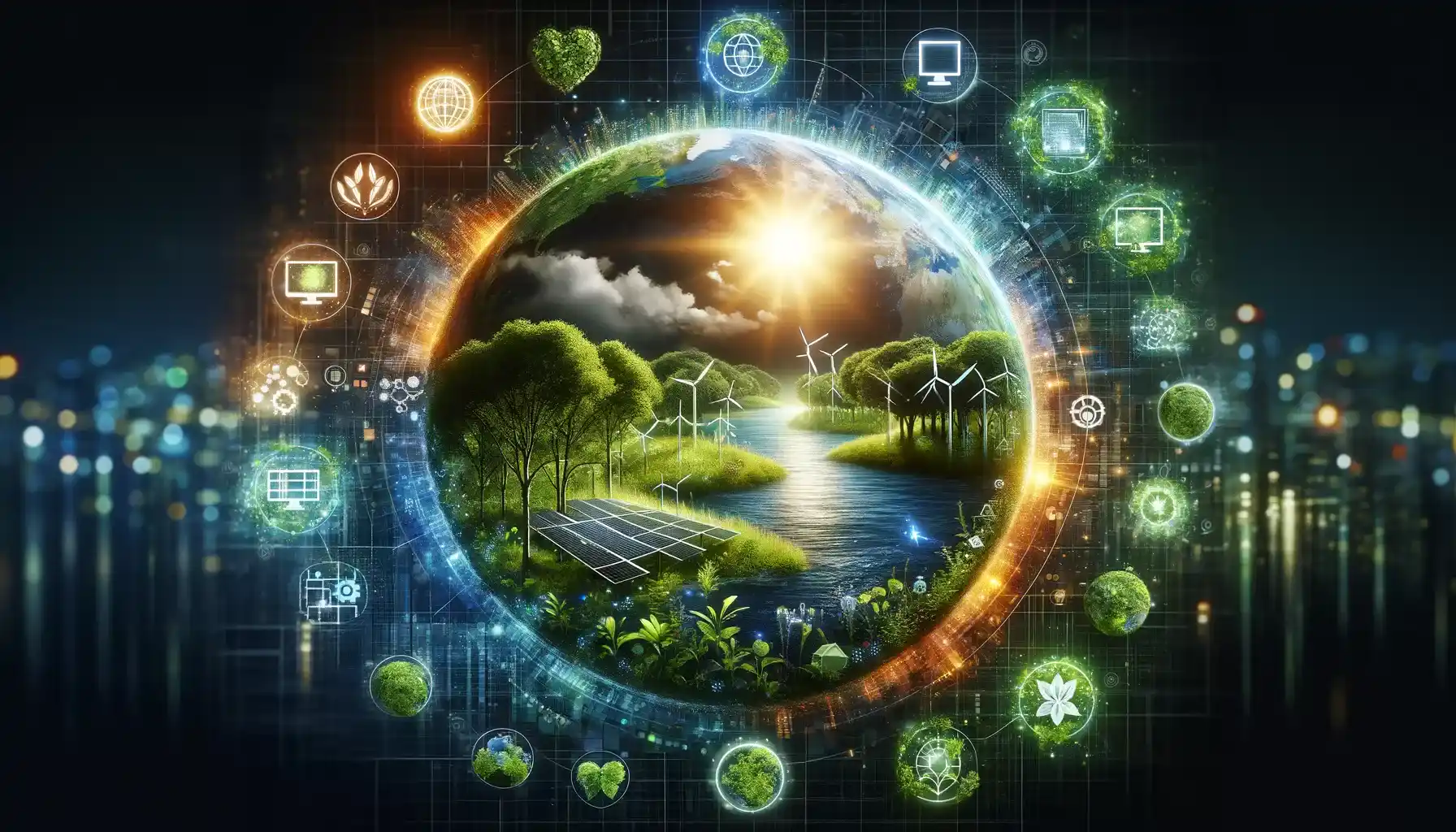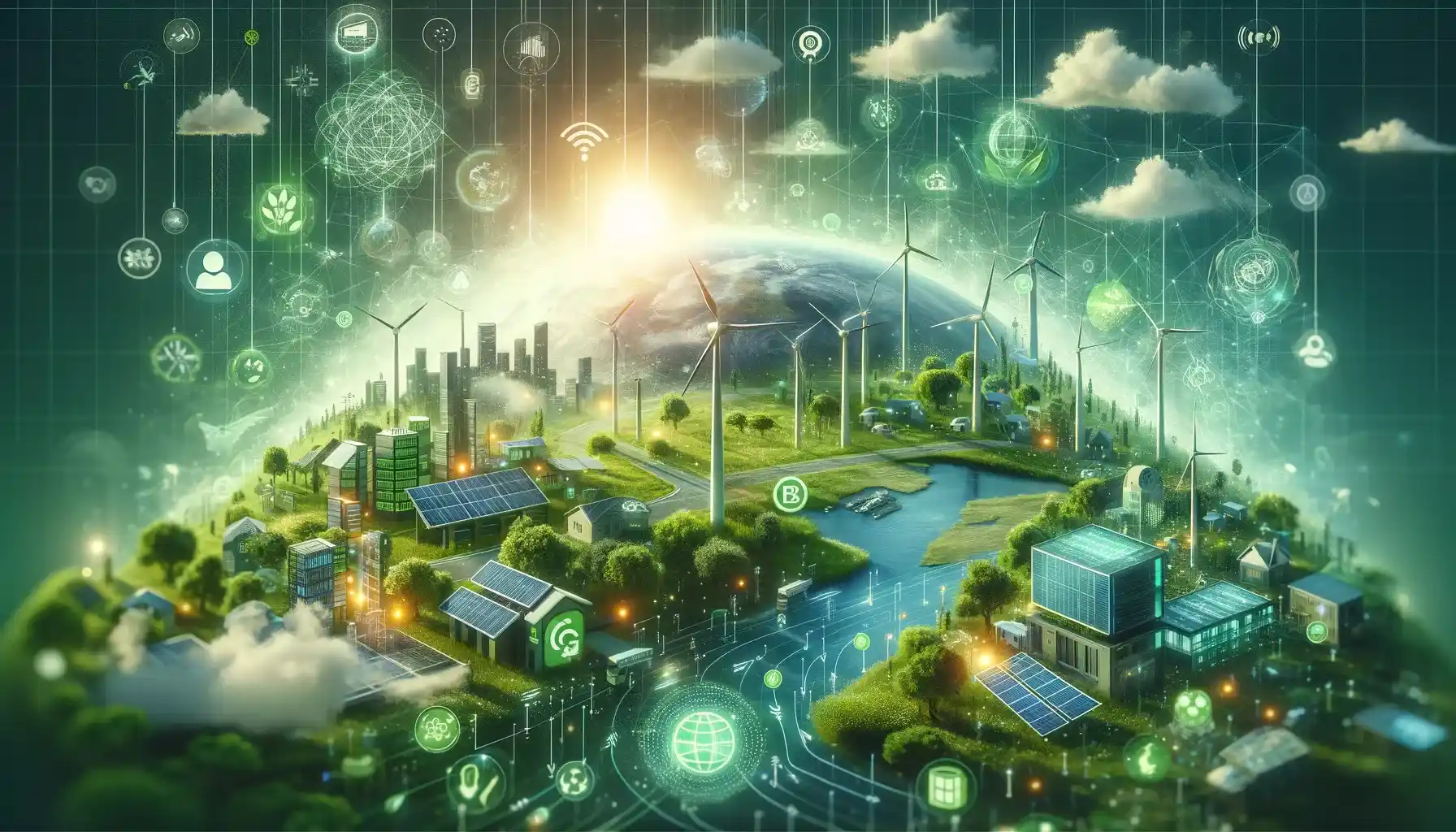Table of Contents
In today’s rapidly evolving technological landscape, the convergence of innovation and sustainability stands as a pivotal focus for businesses striving for enduring success. This article deeply delves into the dynamic realm of IT solutions tailored specifically to champion sustainability initiatives.
By exploring nine well-established strategies, organizations can pave a transformative path toward environmental responsibility and secure longevity in the ever-evolving business landscape.
As we navigate the intricate relationship between technology and environmental stewardship, the spotlight on IT solutions for sustainability intensifies. This exploration of proven strategies not only underscores the integral role technology plays in fostering eco-friendly practices but also underscores its significance as a cornerstone for achieving long-term success. By aligning with these innovative IT solutions, businesses can meet the demands of the present and ensure a sustainable legacy for future generations.
9 IT Solutions for Sustainability

1. Green Cloud Computing
In response to the escalating demand for data storage and processing, the adoption of green cloud computing stands out as a pivotal strategy. This approach focuses on optimizing data centers, instilling energy-efficient practices, and incorporating renewable energy sources to forge a more sustainable IT infrastructure. By embracing innovative technologies and methodologies, organizations can not only meet their operational needs but also minimize their carbon footprint.
Green cloud computing is more than a trend; it is a fundamental shift towards environmentally conscious IT solutions. Implementing such strategies not only aligns with the broader sustainability goals but also ensures that the digital transformation journey is carried out responsibly. In this era of rapid technological advancement, integrating green principles into cloud computing showcases the potential of IT solutions for sustainability, reinforcing the industry’s commitment to a greener, more responsible future.
2. Renewable Energy Integration
Embracing renewable energy sources stands as a pivotal stride in the relentless pursuit of sustainability. This strategy signifies a commitment to environmental responsibility and resilience. Businesses are encouraged to delve into the integration of solar, wind, or alternative eco-friendly power sources. Such endeavors extend beyond mere carbon footprint reduction, fostering a robust, self-sufficient energy infrastructure.
By implementing IT solutions for sustainability, organizations not only align with eco-conscious practices but also fortify their operational foundation against the uncertainties of conventional energy dependencies. The transformative impact of incorporating renewable energy into the IT framework not only bolsters environmental stewardship but also positions businesses at the forefront of sustainable innovation, exemplifying the harmonious synergy between technology and environmental responsibility.
3. Efficient Data Management
Efficient data management lies at the core of sustainable IT solutions, serving as a pivotal factor in minimizing environmental impact and maximizing operational efficiency. This crucial aspect involves implementing strategies like data deduplication, compression techniques, and the adoption of intelligent storage solutions. Through these approaches, organizations can streamline data processes, reducing redundancy and unnecessary resource consumption.
The integration of such practices not only minimizes waste but also optimizes resource utilization, aligning IT operations with sustainability goals. By leveraging advanced data management techniques, businesses can enhance their overall environmental stewardship. IT solutions for sustainability, within the realm of efficient data management, empower organizations to navigate the digital landscape responsibly while fostering a greener and more resource-efficient operational paradigm.
4. Circular IT Economy
In adopting a circular economy approach, organizations strive to prolong the life of IT assets, fostering sustainability through refurbishment, recycling, and responsible disposal practices. By minimizing electronic waste and encouraging the reuse of equipment, businesses play a pivotal role in creating a more sustainable IT lifecycle. This transformative strategy aligns with the ethos of sustainability, emphasizing the importance of resource efficiency and reduced environmental impact.
IT solutions for sustainability in the context of a circular IT economy are instrumental in shaping a paradigm where the end of a product’s life marks the beginning of a new cycle. Through innovative approaches and technologies, companies can contribute to a circular system that not only minimizes waste but also maximizes the value and utility derived from IT assets, underscoring the profound impact of IT solutions for sustainability on the broader environmental landscape.

5. Remote Work and Sustainable Practices
The surge in remote work carries significant implications for sustainability, marking a transformative shift in the traditional work landscape. Delving into this paradigm change, it becomes imperative to understand the pivotal role of IT solutions in fostering sustainable practices. These solutions empower remote collaboration, diminishing the necessity for extensive travel, thereby curbing carbon emissions and promoting a greener approach to work.
The seamless integration of virtual meetings, cloud-based communication tools, and collaborative platforms not only enhances productivity but also aligns with environmental objectives. Harnessing IT solutions for sustainability in remote work settings exemplifies a commitment to eco-friendly operations, highlighting the interconnectedness of technological advancements and the broader goals of building a sustainable, resilient future.
6. Blockchain for Transparency and Accountability
Blockchain technology, renowned for its decentralized and secure nature, emerges as a pivotal player in bolstering sustainability initiatives. Its inherent transparency and traceability attributes prove instrumental in fortifying efforts towards a more environmentally conscious future. By leveraging blockchain solutions, businesses gain a robust and tamper-proof framework to meticulously trace the environmental footprint within intricate supply chains.
This not only ensures a heightened level of accountability but also establishes a secure, transparent conduit for verifying and validating sustainable practices. The integration of blockchain in sustainability strategies thus represents a paradigm shift, fostering confidence among stakeholders and consumers alike. The application of IT solutions for sustainability, particularly through blockchain, not only aligns with ethical imperatives but also positions organizations at the forefront of a global movement, driving positive change towards responsible and transparent business practices.
7. Smart Building Technologies
Smart Building Technologies represent a seamless integration of IT solutions into the physical domain. This entails the convergence of IoT (Internet of Things) devices and sophisticated building management systems, orchestrating an orchestral harmony between digital intelligence and real-world operations. These technologies go beyond mere optimization; they hold the key to revolutionizing energy consumption patterns, elevating operational efficiency, and fostering a distinctly eco-friendly workplace environment.
The implementation of IT solutions for sustainability in smart buildings is a strategic imperative, offering organizations the means to curate an intelligently managed, energy-efficient infrastructure. In navigating this intersection of technology and sustainability, businesses unlock not only operational benefits but also align themselves with the global paradigm shift toward responsible and environmentally conscious practices.
8. Data Analytics for Sustainability Insights
In the realm of sustainable practices, organizations are increasingly turning to data analytics as a potent tool for making informed decisions. This pivotal strategy involves harnessing the power of advanced analytics to gain valuable insights into critical aspects such as resource consumption, carbon emissions, and various sustainability metrics.
By delving deep into data-driven strategies, businesses can pinpoint areas where improvements are needed, optimize resource allocation, and enhance overall environmental performance. IT solutions for sustainability play a vital role in unlocking the potential of data analytics, empowering organizations to align their operations with eco-friendly practices. Through this integration, businesses can not only meet regulatory requirements but also proactively contribute to a more sustainable and responsible future.
9. Employee Engagement and Sustainability Culture
Creating a sustainable future hinges on the proactive involvement of employees. Exploring the synergy between technology and environmental consciousness, IT solutions for sustainability become catalysts for instigating a transformative cultural shift within organizations. By harnessing digital platforms and collaborative tools, businesses can cultivate a sustainability culture that goes beyond mere rhetoric.

IT solutions facilitate seamless communication channels, ensuring that awareness, education, and engagement on sustainability issues permeate every level of the organizational hierarchy. In this paradigm, employees become active agents of change, empowered by the technological tools provided by IT solutions for sustainability. Through this integration, organizations not only fortify their commitment to environmental responsibility but also foster a collective sense of purpose among their workforce.
Forward-Looking Finale with Sustainable Solutions
Incorporating IT solutions for sustainability is not just a strategic necessity but a moral duty in today’s business landscape. Implementing the nine proven strategies outlined in this article enables organizations to diminish their environmental footprint, concurrently establishing themselves as frontrunners in the worldwide push for a more sustainable and responsible future. As technology advances, the convergence of IT solutions and sustainability emerges as a linchpin, destined to shape the triumphs and enduring legacies of businesses globally.
The infusion of IT solutions for sustainability reiterated throughout this exploration, underscores the transformative potential that lies at the intersection of technology and environmental stewardship. It not only propels businesses towards efficiency and competitiveness but also contributes meaningfully to the greater global imperative of safeguarding our planet for future generations.